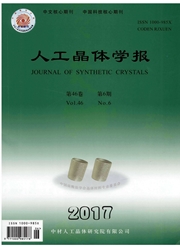

 中文摘要:
中文摘要:
依据气体放电等离子体物理学知识,通过增加靶材的电流密度将靶面气体放电引入至辉光与弧光放电之间的辉弧放电过渡区.借助Ar^+轰击靶面的碰撞动能和电子传输所产生的Joule热能,共同诱发靶面电子与原子克服表面逸出功的自发射.由此获得高密度、高离化和高能量的沉积粒子.实验分别在辉光放电区和辉弧过渡区各制备2组纯Ti薄膜.利用激光共聚焦最微镜(CLSM)对不同靶基距处的薄膜厚度进行测量,通过XRD,SEM,AFM和TEM对薄膜的微观结构进行观察,并使用涂层附着力划痕仪对薄膜的膜基结合力进行测试.实验结果表明:在辉弧放电过渡区内所沉积的纯Ti薄膜具有纳米尺度的晶粒、致密的组织、均匀的薄膜厚度、较快的沉积速率和优异的膜基结合强度.
 英文摘要:
英文摘要:
Magnetron sputtering ion plating (MAIP) is limited by the low density and low ionization of target atoms, which results in that the films deposited by MAIP have poor compactness, low adhesion and the quick decreasing in thickness along the target-to-substrate distance, so this disadvantages of the film quality and property can not satisfy the harsh need of modern society. Based on the physical gas discharging plasma theory, the gas discharge could be introduced into the glow-arc discharge section between the glow discharge and the arc discharge by increasing the target current density. By means of the collision kinetic energy of Ar^+ and the Joule heating effect of electrons, the electrons and atoms could be spontaneously induced to emit by overcoming the surface work function. Thus the deposited particles with a high density, a high energy and a high ionization can be obtained. Two groups of the Ti films were deposited in glow discharge and glow-arc discharge sections respectively. The film thickness at different target-to-substrate distances was measured by the CLSM. The microstructure of films was characterized by XRD, SEM, AFM and TEM. The adhesion between the film and substrate was determined by the microscratch tester. The results showed that the Ti film deposited in the glow-arc section of gas discharge had nanocrystal size, dense structure, uniform thickness, high deposition rate and excellent adhesion.
 同期刊论文项目
同期刊论文项目
 同项目期刊论文
同项目期刊论文
 期刊信息
期刊信息
